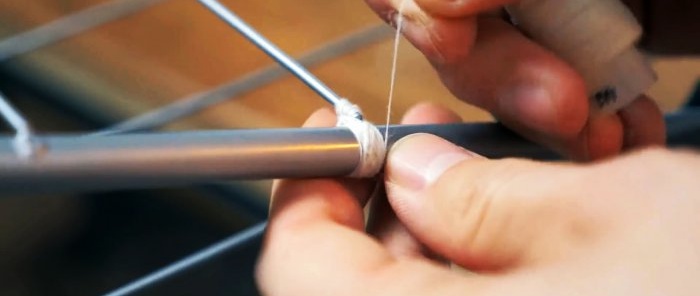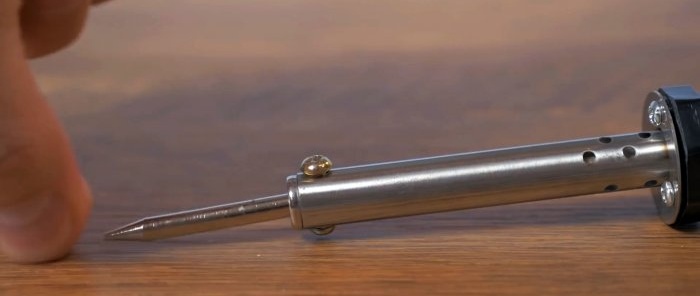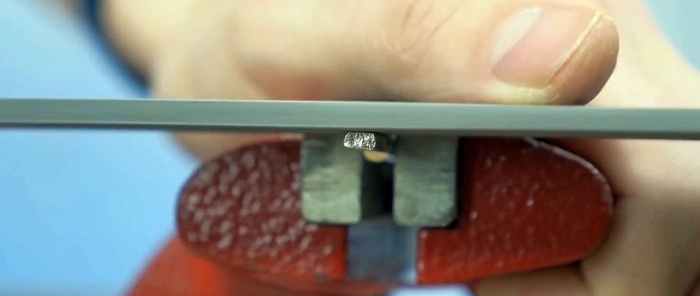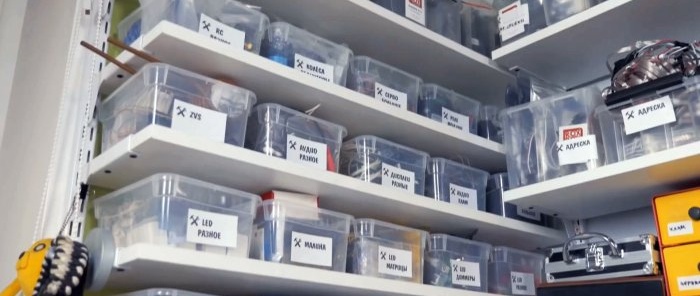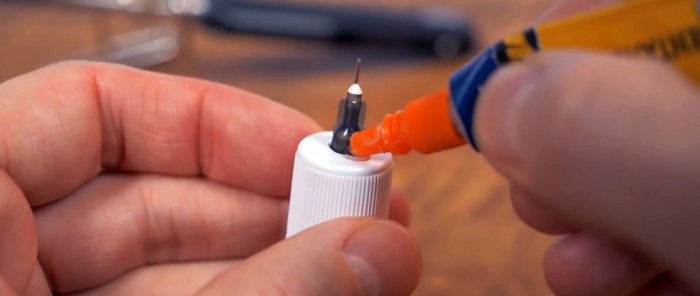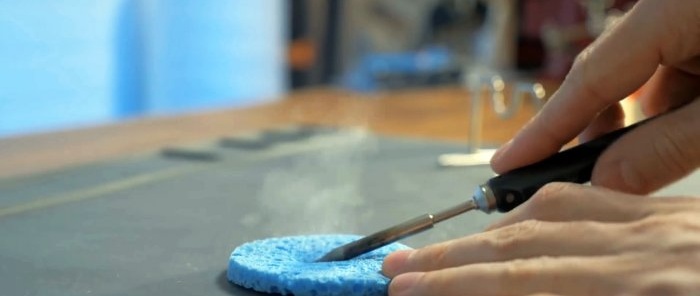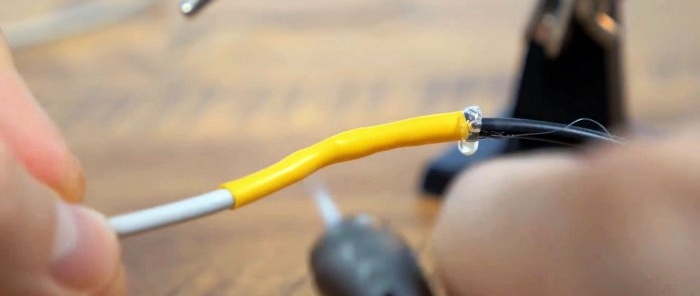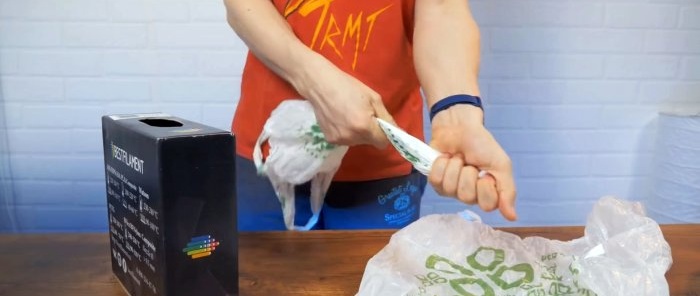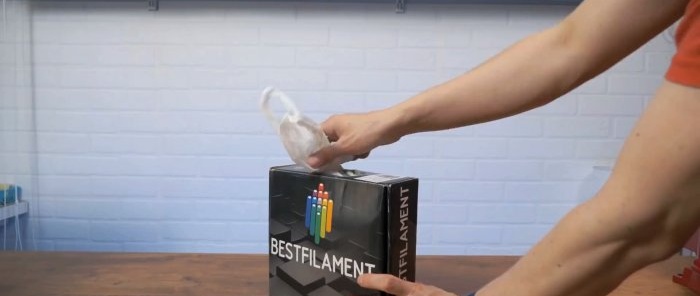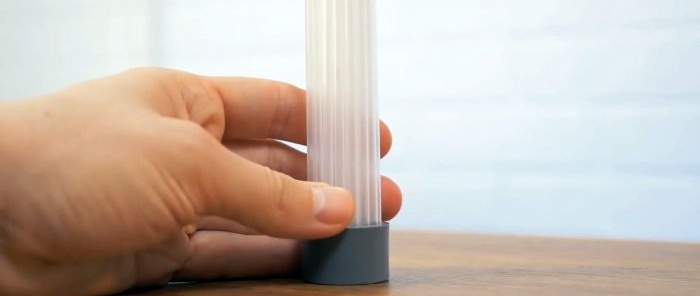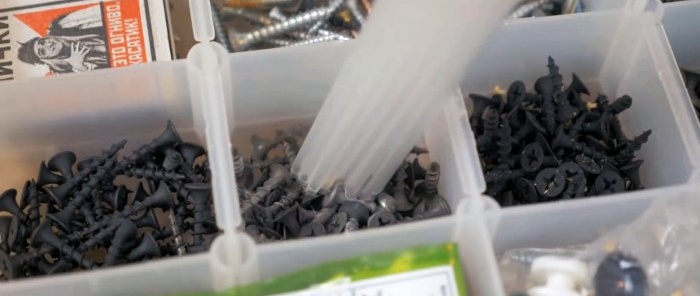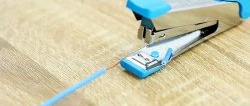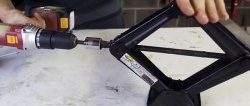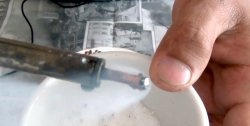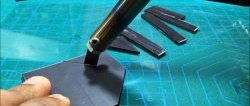1. Superglue + thread
Many people use the method of sprinkling superglue with soda to instantly harden it and form a durable polymer. A similar effect can be achieved by combining glue and thread. The parts to be joined are wrapped with threads and then impregnated with glue.
The result is a very durable reinforced material. This method is convenient for making various couplings.
2. Plastic cutter from a soldering iron
If you remove the tip from the soldering iron and sharpen its back side into a sharp knife, you can get a cutter for plastic.
This heated inverted blade perfectly cuts PVC, PP, HDPE, etc. In this case, you can always rearrange it in reverse and perform soldering.
3. Storage system for home
To organize the storage of small items, you can use plastic containers. For convenience, labels are attached to them. Such containers are displayed on shelves.Since they are transparent, you can see what is inside them, and labels help you find out where everything is.
4. Nozzle for soldering flux
To conveniently apply soldering flux, you need to glue a shortened needle from a syringe into its lid.
To do this, the lid is drilled, the needle is inserted from the inside and glued on the outside with superglue and soda. The resulting thin spout will allow you to apply flux in small drops to wires and microcircuits. You can close the jar with a needle cap.
If you already have flux with a standard thick spout, then you can glue a needle inside it. This will reduce the droplet size when applied.
5. Quickly strip wires with a soldering iron
Some types of thin wires can be stripped for soldering by applying the hot tip of a soldering iron to the end of the wire. The insulation melts very quickly, so you won’t need to remove it manually.
The MGTF wire can be easily cleaned with a lighter. Only this should be done under a hood, since when burned, the insulation produces acrid smoke.
6. Solder spiral
If you solder a lot, then the solder from the coil has to be unrolled often. To do this less often, you should roll it into a spiral. This way you can unwind it more.
7. Quick cleaning of the soldering iron tip
If you soak a cellulose sponge with glycerin flux or pure glycerin, it will better clean the soldering iron tip. Since it does not evaporate, it will remain on the sponge until it burns out.
8. Sealed insulation with hot melt adhesive
After soldering the wires and insulating the cores, you can apply hot melt glue on top. While it is hot, heat shrink tubing is put on them and shrinks. The result is a hermetically sealed insulation that is resistant to mechanical stress.
9. Where can you put boxes and spools of filament for a 3D printer?
Empty filament boxes can be used to store bags. To do this, the bag is pulled out, the air is expelled from it, and it is tucked into the box up to the handles.
The next package is prepared in the same way, but the bottom is inserted into the protruding handles of the previous one, folded in half and also pushed into the box. In this way, the remaining bags are refilled. Then they can be pulled out one at a time.
Filament spools can be used as a frame for an organizer. Trays for it are printed on a 3D printer.
10. Vacuum cleaner attachment
To vacuum boxes with small parts, you can make a narrow attachment for a vacuum cleaner. It is a tube for cocktails glued into the bottom of a glass. The nozzle is placed on the hose of the vacuum cleaner that is turned on, after which air will be sucked in through the tube.
11. Grout the mailing address quickly
If you prefer not to throw Aliexpress envelopes with your address, name and phone number in the trash, but paint over your personal data with a marker, you can try erasing them with a lighter. Most of these labels are printed on thermal paper. If you heat it, it will turn black.
